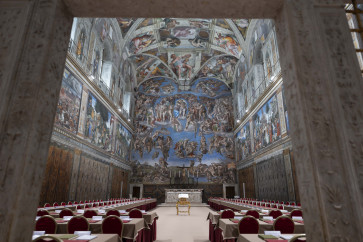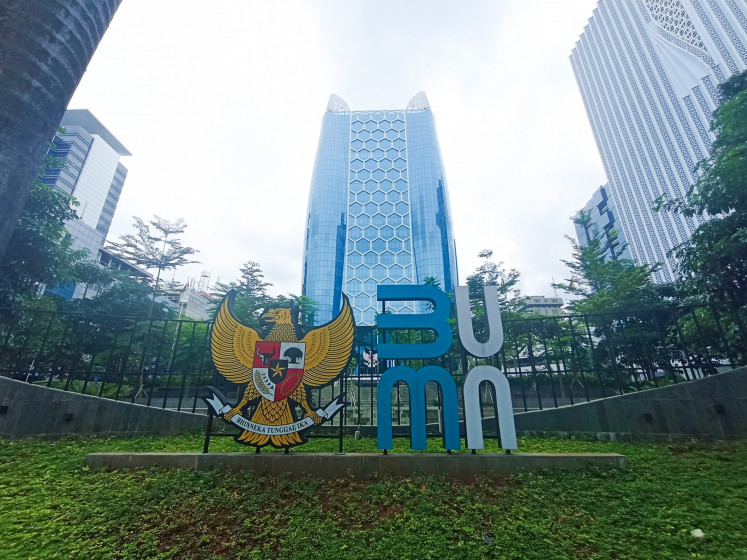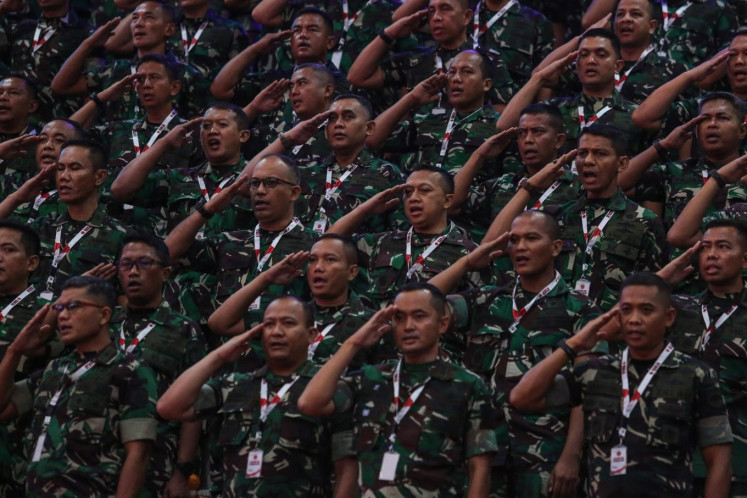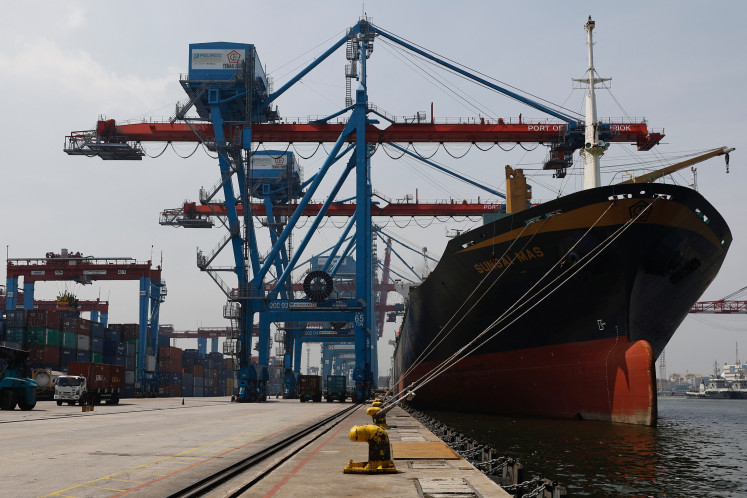RI plays influential role at the COP16 in Cancun
Scattered among luxury hotels in the Caribbean paradise of the Yucatan Peninsula, delegates to this year’s high-level climate talks anticipate the second week with a mixture of uncertainty, frustration and hope
Change text size
Gift Premium Articles
to Anyone

S
cattered among luxury hotels in the Caribbean paradise of the Yucatan Peninsula, delegates to this year’s high-level climate talks anticipate the second week with a mixture of uncertainty, frustration and hope.
At the forefront of everyone’s mind is one central question: Can COP16 of the UN Framework Convention on Climate Change (UNFCCC) provide both a binding mandate and a real trajectory toward mitigating climate change? Or will the delegates find themselves witnessing the death throes of a moribund Kyoto Protocol?
One thing the delegates do not want is a repetition of COP15. The Copenhagen Accord was never adopted as a legally binding agreement of the Convention. The real question before the delegates is whether we will emerge from these negotiations with a legally binding instrument. The Kyoto Protocol is the single such instrument the convention has in place. And it expires in two years.
The Indonesian delegates in Cancun are poised to play a pivotal role in altering the outcome of COP16.
Indonesia is at the forefront of efforts to link forest conservation and emissions reductions, known as REDD+.
REDD+ already figures in agendas of two key bodies: the Subsidiary Body for Scientific and Technological Advice and the Ad Hoc Working Group on Long-term Cooperative Action (AWG-LCA). By introducing lessons learned from the first Indonesian REDD-plus initiatives out of the gate, Indonesian delegates are well placed to win the REDD+ field, and have a positive effect on the session outcome.
Mexico and its presidency to the COP16 is well positioned to influence the direction of the debate. Like Indonesia, Mexico is a non-Annex I member of the UNFCCC. Mexico is also a member of the Organization for Economic Cooperation and Development. The country is thus seated at several tables with developed countries, those with high income per capita and high Human Development Index ranking.
The UNFCCC’s newly appointed executive secretary Christiana Figueres captains a ship here full of competing agendas. The climate change conference is in fact a series of distinct meetings of subsidiary bodies, conferences of parties, and ad hoc working groups. With mandates in mind, outcomes from two ad hoc working groups are pivotal: The 15th session of the Kyoto Protocol Ad Hoc Working Group (AWG) and the 13th session of the AWG-LCA.
The text of the AWG-LCA reflects the four building blocks of the Bali Action Plan adopted at the Bali COP13 in 2007: Mitigation, adaptation, technology transfer and capacity building and financial mechanisms. The plan calls for developing nations including Indonesia to mitigate climate change under a new mantle, the so-called Nationally Appropriate Mitigation Actions. The Bali Action Plan is well and good — except that it fails to specify emission reduction targets. And the legal details in the AWG-LCA text have yet to be finalized.
As it stands now, the older Kyoto Protocol AWG has teeth, but it faces challenges from industrialized countries, including its birth place, Japan.
Bringing these two agendas together to create a strong Mandate in Cancun would be a triumph. The process is reminiscent of the arduous chain of events that resulted in the Kyoto Protocol – born a full two years after the Berlin Mandate was endorsed in COP1.
The single remaining instrument with any clout is the Kyoto Protocol AWG. The deep cuts it mandates must be adhered to if we are to make any progress toward mitigating climate change.
According to IPCC scenarios, to limit warming to a 2 degrees Celsius temperature increase requires developed countries as a group to reduce their emissions by as much as 10-40 percent below 1990 levels by 2020. By 2050, developed nations will have to decrease emissions by 40-95 percent below 1990 levels.
The non-Annex 1 parties are not convinced the developed nations plan to comply. The Kyoto Protocol stipulates that they cut emissions to 5 percent below 1990 levels in the first commitment period (2008–2012). So far, reductions have been minimal.
The two industrial giants here in Cancun, the United States and China, are unlikely to make a deal. Both sustained bruises in Copenhagen. President Barack Obama’s proposed emission cut of 17 percent of 2005 levels by 2020 is nowhere near enough to cap warming at 2 degrees Celsius above pre-industrial levels. Worse, that proposal was virtually killed following recent Republican gains in the US midterm elections.
Indonesia’s delegates can also contribute to smaller, targeted gains at the Convention. The Adaptation Fund under the Kyoto Protocol, collected from a 2 percent Clean Development Mechanism levy, is intended to target the least developed countries, a category to which Indonesia does not belong. The Convention must establish a financing mechanism, and clarify how these resources should be pooled and allocated.
The suggested 0.7 percent of developed country GDP earmarked for the Official Development Assistance could be made legally binding. Joining hands with our G77 colleagues to achieve this commitment would benefit the developing world.
The writer is senior scientist at the Center for International Forestry Research (CIFOR) and former
Indonesian National Focal Point to the UNFCCC.









